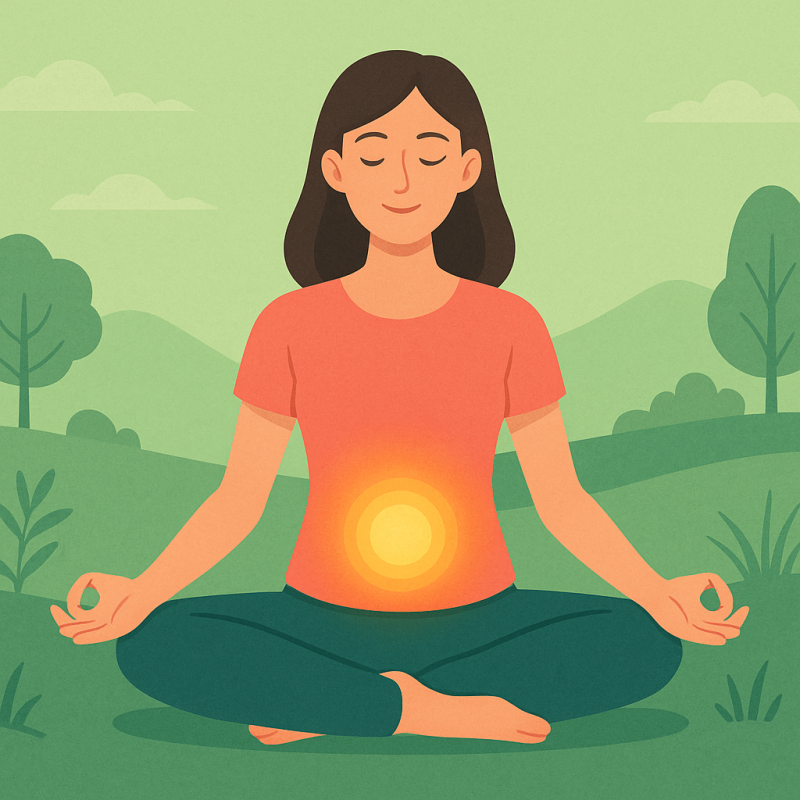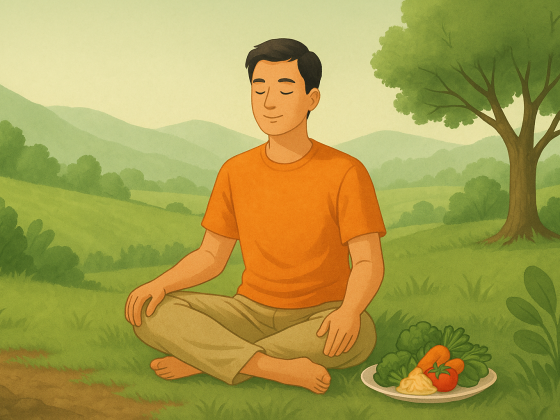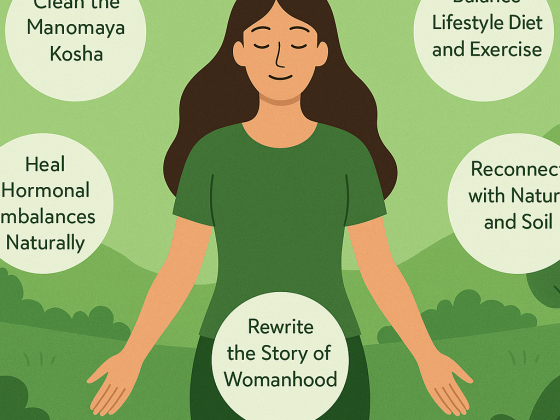Yesterday, I attended an online training with Sikander Tuteja, a seeker walking in the light of Dr. Pandey’s teachings. The session was about PCOD (Polycystic Ovarian Disease) and PCOS (Polycystic Ovary Syndrome), two conditions that affect millions of women today. It was not just medical information—it was a journey into how lifestyle, hormones, emotions, and even our belief systems play a role in women’s health. I want to share here what I learned, along with my reflections, in the most natural way so that others can benefit too. I really thank Mr. Sikander Tuteja for this wonderful session.
Symptoms and First Signs
The common symptoms that appear in women struggling with PCOD/PCOS are obesity, irregular periods, facial hair, and slow metabolism. Some also experience skin issues, mood swings, and difficulty in conceiving. The medical terms that describe these symptoms include oligo-ovulations (infrequent ovulation), anovulations (absence of ovulation), hirsutism (unwanted male-pattern hair growth), alopecia (hair loss), and acne.
One fascinating fact I learned is that a woman’s body has the capacity to make over 100,000 eggs, but in her entire lifetime, she will use only around 400 eggs. Nature is abundant, but it also chooses carefully.
PCOD vs. PCOS
Although people often confuse them, PCOD and PCOS are not exactly the same. PCOD usually arises due to lifestyle factors such as poor diet, lack of exercise, and stress. PCOS, on the other hand, is a deeper hormonal imbalance condition that may also involve genetics, stress, and environmental triggers. But what struck me most in the training was the idea that neither of these are just the “root causes.” They are the results of something deeper inside the body and mind.
Why Does PCOS Happen?
The causes of PCOS are diverse. Women can experience anovulation due to being underweight, extreme exercise, premature ovarian failure, thyroid dysfunction (hyperthyroidism), perimenopause, low ovarian reserves, very high stress, and of course polycystic ovarian syndrome itself. Each of these conditions disrupts the natural menstrual cycle.
Different Types of PCOS
There is no single face of PCOS—it manifests in different ways. Some of the types mentioned were: Non-facial hirsutism PCOS, Ovulation-related PCOS, Classic PCOS, Insulin-resistant PCOS, Post-pill PCOS, and Androgen-dominant PCOS. Each type has its own triggers and symptoms, but the underlying imbalance always lies in hormones and lifestyle.
Understanding the Menstrual Process
The menstrual cycle is one of nature’s most incredible designs. Its biological role is to proliferate the human race, but motherhood is a choice. Nature, however, does not work according to our choices—it follows its own rhythm. Normally, the cycle is around 28 days and involves three major changes in the body: changes in the uterus lining (endometrium), the ovaries, and the hormones.
The phases of the cycle are menses, the proliferative phase, and the secretory phase. In normal conditions, the fertile window is between day 11–16, when chances of pregnancy are around 80%.
Hormones play a key role here: progesterone sustains pregnancy, corpus luteum transforms into corpus albicans if no pregnancy occurs, and estrogen helps regulate the cycle. When progesterone and estrogen fall out of balance, irregular periods are the result.
The Role of Obesity and Insulin Resistance
Obesity is one of the major contributors to PCOD/PCOS. Fat cells (adipose tissue) are not just passive storage—they are active in hormone regulation. Excess fat can lead to hyperinsulinemia (excess insulin), which raises androgen levels and causes abnormal hair growth and acne. Fat tissue produces enzymes like aromatase, which convert hormones and further raise androgen levels. This leads to hyperandrogenism, which disturbs the delicate balance of LH (luteinizing hormone) and FSH (follicle-stimulating hormone).
Another hidden factor is estrogen dominance, often caused by environmental toxins known as xenoestrogens. These come from plastics, chemicals, and processed foods, and they mimic estrogen in the body, causing further imbalance.
Root Cause of PCOD/PCOS
The training emphasized that conventional medicine and holistic healing view PCOD/PCOS differently. The conventional approach usually focuses on workout, diet, and sometimes surgery. But these are not enough. The holistic approach goes deeper. It asks you to define yourself, to clean your inner layers, especially the Manomaya Kosha—the subtle mental layer of emotions and thoughts.
Dr. Pandey’s philosophy teaches us that thoughts become emotions, emotions influence hormones, and hormones communicate with every cell. If thoughts are negative or conflicted, they disturb the entire body. Healing therefore is not only about fixing the physical but also about rewriting the mental story.
The Deeper Layers of PCOS
The training shared a profound idea: sometimes PCOS begins not with food or stress but with the thought, “Why am I a girl?” or with the pressure of being the “good girl.” This emotional burden plants seeds of conflict in the subconscious mind, which slowly manifest in the body as disease. Science supports this too: from gene expression (DNA to RNA to mRNA), the signals we give to our body through thoughts and emotions can change how cells behave.
A Cultural Reflection
I was also asked to look into the history of menstruation. In ancient times, many cultures celebrated menstruation as a sacred event, honoring it as a symbol of creation and renewal. But today, it is often seen with shame, secrecy, or discomfort. This cultural shift also impacts the subconscious mind, adding stress and negativity to something that should be natural and respected.
Solutions: Rewriting the Story
The final solution shared in the training was inspiring: diet and exercise are only 20–30% of healing. The real 70–80% lies in rewriting your story. This is where the Manomaya Kosha must be cleaned.
One method is to write an emotional blog every day. Write down who made you happy, who made you sad, and why. If someone made you happy, give thanks. If someone made you sad, offer forgiveness. This simple act starts clearing the burden.
Another method is decluttering your mind through memory mapping. Write about the good and bad events of the past month. Note who was responsible for your happiness or sadness. Again, thank them or forgive them. Slowly, this releases the emotional blockages.
A third method is acceptance. Look into the mirror and say, “I accept my life as it is. I accept my finances as they are. I accept myself as a girl.” This mirror activity may feel small, but it directly clears conflicts in the subconscious.
Conclusion: Cleaning the Manomaya Kosha
The greatest lesson I took from this training was that PCOD/PCOS is not just about hormones, ovaries, or weight. It is a reflection of a deeper imbalance between thoughts, emotions, and body. Medicines, surgeries, and diets have their place, but true healing requires us to go deeper—to clean the Manomaya Kosha, the mental layer where our stories are written.
By rewriting our story with gratitude, forgiveness, and acceptance, by reconnecting with nature, and by respecting the cycles of the body, women can find real healing. The solution is not outside but within.


